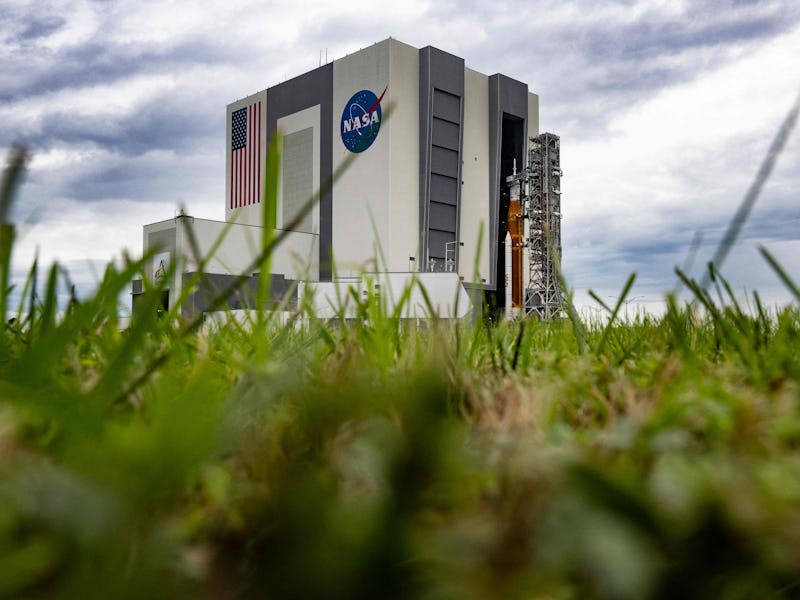Artemis I: A fire at NASA Kennedy gives the long-delayed Moon mission its latest twist
Artemis I teams handled a lot.

NASA is in the midst of mitigating the destructive potential of a powerful hurricane that barrels towards Florida. Tuesday presented another dash of chaos, when a fire ignited inside the building that currently shelters the agency’s Moonbound Artemis I rocket.
Update on Monday, October 3: NASA announces it will forgo an October launch. The space agency now aims to fly Artemis I sometime between November 12 and November 27.
Kennedy Space Center (KSC) director Janet Petro told reporters on Tuesday that NASA leaders have been contemplating how to handle the alarming weather reports they’ve received. What began as a tropical depression in the western Caribbean last week quickly escalated into Hurricane Ian, which is projected to strike eastern Florida with tropical storm winds on Wednesday morning.
Note: If you are following the developing news on Hurricane Ian, consider watching this video from the National Oceanic and Atmospheric Administration (NOAA) on how to interpret hurricane path predictions. Do NOT use the cone to assess your risk of strong winds, storm surge, heavy rain, or tornadoes.
KSC is spared a direct strike because of its location in Cape Canaveral on Florida’s Atlantic coast, but wind and lightning are still dangerously rough. Teams met several times over the weekend beginning on Friday to discuss the track and intensity of the storm. “We have the hurricane plan that applies to all NASA hurricane and contractor organizations,” Petro said.
KSC prepares for Hurricane Ian
The four stages of HURCON, or hurricane conditions, outline NASA’s storm preparation steps, beginning at IV and gradually moving down in 72-, 48-, 24- and 12-hour increments until the storm strikes.
Clouds from the approaching Hurricane Ian darken the sky near St. Petersburg, Florida, on September 27, 2022.
KSC began to run through its hurricane alert system on Monday. “At that time, notifications and preparations were started with communications to every organization and our center, and we began identifying personnel who would be riding out the storm as members of our ride-out team.”
After a meeting at 9:00 a.m. Eastern on Tuesday, KSC entered the next stage. “We did declare and go into HURCON III this morning,” Petro said. This is the period 48 hours ahead of the storm’s arrival, “when the bulk of the hurricane work happens,” Petro added. “We go about securing our facility, our property, our equipment, and hopefully the ride-out team members are able to go home and prepare their homes for the arrival of this storm.”
Shortly after that meeting at 9:15 a.m. Eastern, Artemis I entered KSC’s Vehicle Assembly Building (VAB) so NASA could protect it from the harsh weather conditions on the way. VAB has withstood past storms, and even lost hundreds of exterior panels during back-to-back hurricanes in 2004.
But then, a couple hours later, a fire broke out in this shelter. “At approximately 11:45 p.m. today, a fire was reported in the Vehicle Assembly Building. Employees were evacuated, and there are no reported injuries,” KSC shared via Twitter. “The VAB is fire safe, and the Artemis I vehicle was not at risk. We will provide updates as we have them.” The agency later indicated on Twitter that it happened at 11:45 a.m.
Petro said there were no reported injuries, and that it likely had no effect on Artemis I since it happened “at a good distance” away from the rocket. NASA says it is still investigating the cause of the fire.
What does this mean for Artemis I’s launch?
NASA is coordinating several factors to see what’s the best choice for the next launch target. A launch in October, as early as next week, is not off the table. But Jim Free, associate administrator of NASA’s Exploration Systems Development Mission Directorate, suggested it’s unlikely. Free told reporters he didn’t want Artemis I to return too quickly to the launchpad without first addressing “limited-life items” that need periodic reassessment.
Free also said the team prefers to do a daytime launch, but November’s launch opportunities wouldn’t support that.
For now, NASA’s workforce finishes final preparations ahead of the storm, for the rocket and their families.